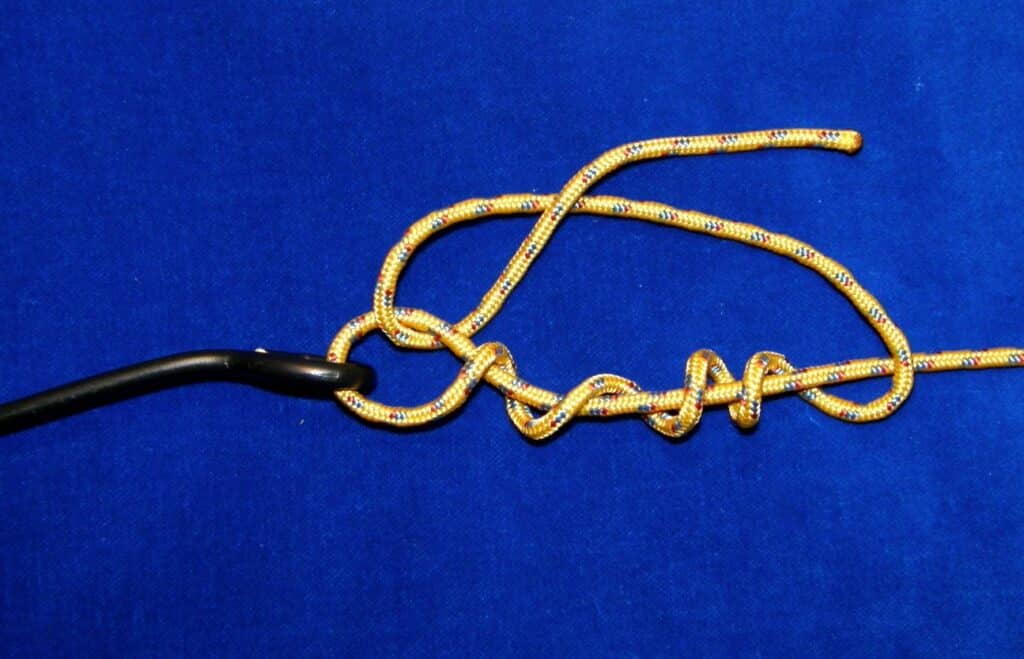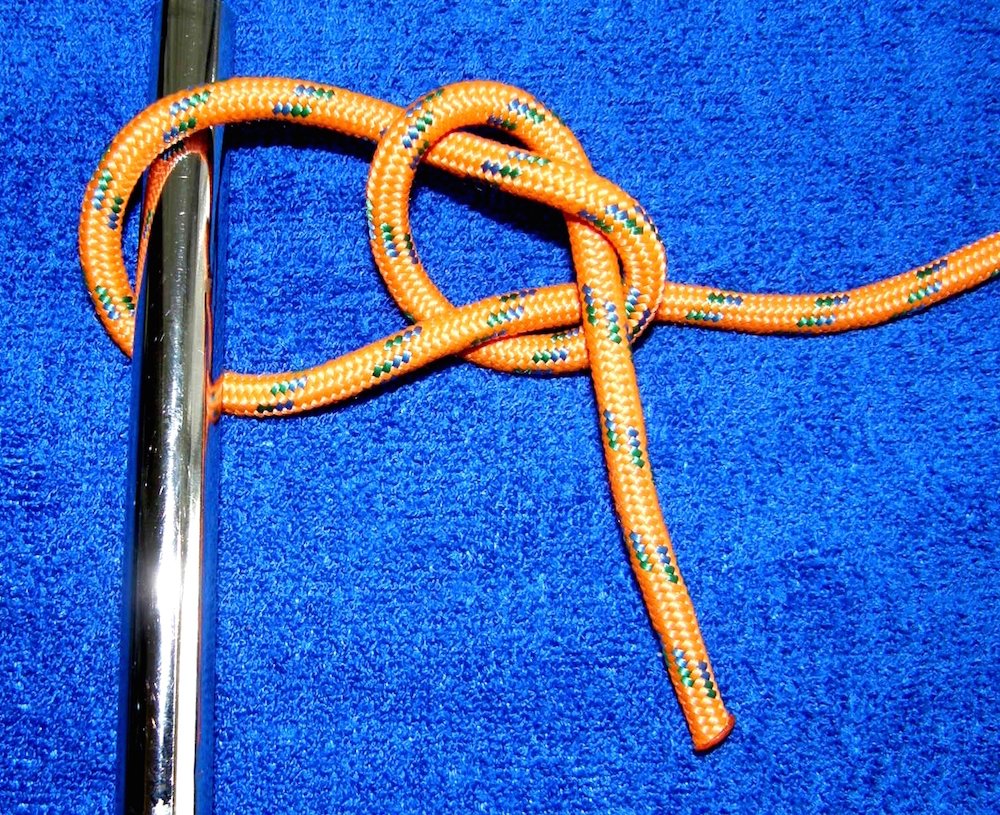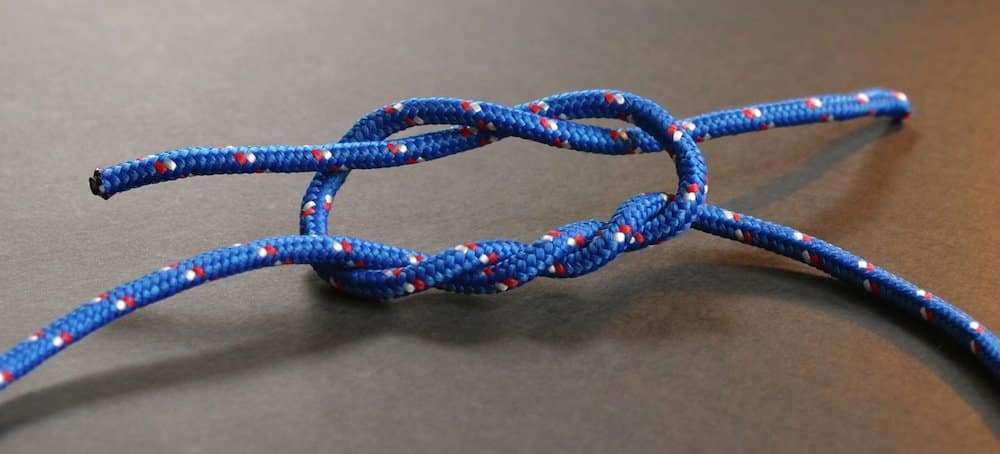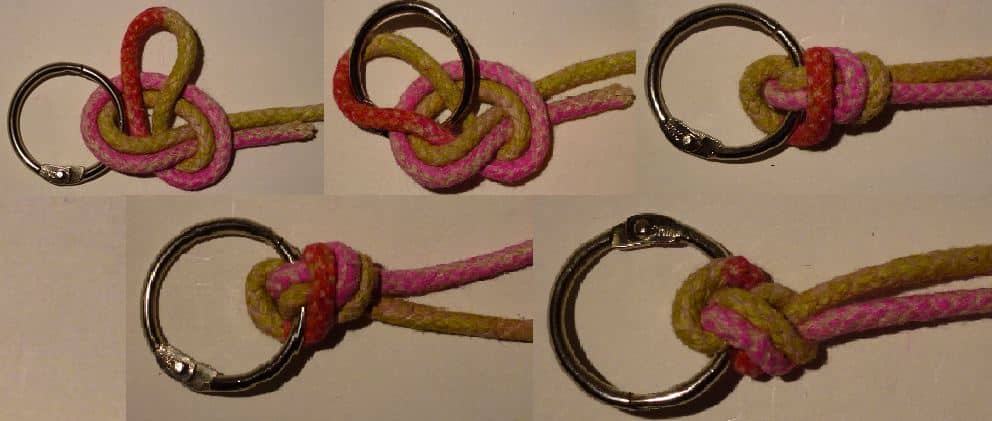A new angler will want to get out on the water as soon as possible, but they should head out with at least a basic knowledge of some important fishing knots. Different situations call for different fishing knots, fishing hook knots are very different from those needed to tie two lines together. You never know what situation you might run into while fishing, so it is important to know a variety of different knots.
In order to help beginner anglers get a better idea of some of these fishing knots, here are our picks for some of the most important ones to remember!
Fishing Hook Knot
Improved Clinch Knot – Fisherman’s Knot

This easy fishing knot is one of the most popular and is generally used for tying a line to a fish hook. This knot is also known as the Fisherman’s Knot because of how popular and useful it is for anglers. This should be the very first knot that anyone learns to tie when starting out in fishing. This knot is regarded as a fisherman’s reliable standby. It is particularly suited for attaching a small diameter tippet to a heavy wire hook. The extra final tuck improves your chances of holding a strong fish. It is very simple to tie and easy to remember!
How to Tie a Fishing Hook Knot
- First, thread the line through the hook and then wrap it 5 to 7 times around the line with the loose end.
- Thread the loose end through the loop that is closest to the eye, the back inside of the loose section of the line.
- Pull both ends of the line until it is tight.
- Trim the loose end if necessary.
Fishing Spool Knot
Arbor Knot

This knot is used to tie the fishing line to a spool on a fishing reel, whether it is a fly reel, spinning reel, or a baitcasting reel. Attaching a new line to a fishing reel can seem like a daunting task, but it is fairly simple and easy when you use this knot! The arbor knot is really based on a noose knot and, therefore, pulling tightens it. The same knot is used in Bushcraft under the name Canadian Jam Knot where a light rope, e.g., paracord, is being used to compress a load such as a sleeping bag or is used as the first step in creating a lashing.
How to Tie a Fishing Spool Knot
- First, wrap the line around the spool with the tag end of the line, then tie a simple overhand knot around the part with the tag end.
- Next, tie a second overhand knot in the tag end around an inch from the first overhand knot.
- Pull the standing line to slide the first overhand knot down onto the spool and the second knot against the first. Trim the tag end down as close as you can.
Fishing Line Knots
Double Uni Knot

This particular knot is used by anglers for joining together two different lengths of fishing line. It is great to use for leaders or if you are using two types of fishing lines and need to combine them together.
How to Tie a Fishing Line Knot
- First, overlap both ends of the lines that you wish to combine. Take the end of the line of the left and double back to make 3 wraps around both lines and through the loop that was formed by doing so. Pull tag end in order to tighten.
- Repeat this process with the end of the line on the left, making the same number of wraps.
- This results in two Uni knots. Now pull the standing lines in opposite directions in order to slide the two knots together. Snip both loose ends close to the knot.
The Surgeon’s Knot

Just like the double uni knot, the surgeon’s knot is used to tie together two different fishing lines. This is especially useful when tying on a leader, or connecting an inner and outer fishing line together. the surgeon’s knot is optimal for fastening together two fishing lines of different diameters, and it has a pretty sturdy breaking strength. It’s easy to tie and is essential for any angler, especially if you’re the kind of fisherman who keeps bits and pieces of old fishing line lying around for future use.
How to Tie a Surgeons Knot
- Place the two lines side by side. Use both lines to form a small loop with enough slack to overlap and tie a double overhand knot.
- Pull both ends through this loop, and then again a second time.
- Lubricate the knot and pull it tight.
- Trim any excess line if necessary.
Braided Fishing Line Knot
Palomar Knot

Last but certainly not least, we have the Palomar knot. This is also one of the most well known and most used knots amongst anglers. This fishing knot is especially useful with braided fishing line. It is very similar to the clinch knot and reliable in terms of strength and durability. The knot most often used to tie a fishing line onto a hook.
How to Tie a Braided Fishing Line Knot
- The first step is to double over your line in order to make a small loop. Push this loop through the eye of the hook that you are using.
- Tie a simple and loose overhand knot with the slack.
- Next, pass the loop around to the end of the hook and through.
- Pull on the line in order to tighten it, and trim any excess line if necessary.
Fishing Knots Tying Tool
Hook Eze
We realize you may not want to remember how to tie all these knots. There are some fish knot tying tools out there that can help. One of the most highly rated tools out there is Hook Eze. It is simple to use. Great for joining Line to Line when tying on flies – and joining your backing line to the tippet. Line to Leader. Braided Line to Mono filament/ Leader using the various knots. Hook Eze is an Awesome Bimini Twist tool as the built in swivel helps create the twists in the line and now can be tied using only 2 hands and a Hook-Eze. Quick, Safe, Easy, Suitable for anglers of all ages and experiences. Even comes with a nifty for safely covering your hooks when carrying your fishing pole.
- Fishing Knot Tying Tool for your fishing gear. Cover fishing hooks on fishing poles and travel safely. Built in Stainless Steel Line Cutter. Suitable for Saltwater and Freshwater fishing, perfect for use in a Kayak and Ice Fishing. Hook-Eze also helps to tie Swivels Jig Heads and Speed Clips for attaching lures or other rigs including a small variety of Flies. Suitable for tackle used for smallmouth and largemouth bass, carp, walleye, perch and crappie and more species
- Simple to Use - Great for joining Line to Line when tying on flies - and joining your backing line to the tippet. Line to Leader. Braided Line to Mono filament/ Leader using the FG Knot, Blood or Yucatan knots. Hook Eze is an Awesome Bimini Twist tool as the built in swivel helps create the twists in the line and now can be tied using only 2 hands and a Hook-Eze
- Now Everyone Can Tie their Own Tackle with a professional knot. Quick Safe Easy Suitable for anglers of all ages and experience - Never lose a fish from a faulty knot! Ideal for cold weather conditions, numb or arthritic fingers and other disabilities to the hands. Tie the Improved Clinch Knot and Palomar Knots perfect every time. Fits hooks sized from a Standard 4/0 hook down to the smallest hook No 28. Great addition to any tackle box!
- Travel Safely - use Hook-Eze to cover the hooks attached to the pole so you can safely transport your fishing pole whilst fully rigged. No more torn upholstery or damage to your car, boat, RV or caravan. Avoid injuries to your passengers or pets
- Hook-Eze is Made from High Quality 100% Raw Virgin UV Stabilized Polypropylene and Stainless Steel fittings making it impervious to all weather conditions and saltwater
Prices pulled from the Amazon Product Advertising API on:
Product prices and availability are accurate as of the date/time indicated and are subject to change. Any price and availability information displayed on [relevant Amazon Site(s), as applicable] at the time of purchase will apply to the purchase of this product.
Fishing Knots Final Thoughts
And there you have it! All of these fishing knots are very basic and easy to remember and they will help you successfully accomplish many different functions that you might face while out fishing. By learning and practicing these knots, you can be better prepared for these situations and spend more time fishing, and less time messing around with your fishing gear!







